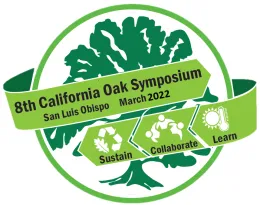#25

Monitoring Drought and Beetle Mortality in the Santa Monica Mountains and Implementing an Early Detection-Rapid Response Plan
Rosi Dagit, RCD of the Santa Monica Mountains
Since 2012 hundreds of native trees (alders, oaks, sycamores, willows) in the Santa Monica Mountains have died, mostly due to the drought, but many are also victims of the invasive shot hole borer/fusarium complex (ISHB) and a pathogen newly carried by the western oak bark beetle (WOBB). The Santa Monica Mountains National Recreation Area is a mosaic of over 150,000 acres of public open space interwoven into the urban-wildland interface of Los Angeles County.
Concerned about the ecological implications of massive native tree loss, the RCDSMM initiated a community science based study in 2015 tagging over 350 trees in 41 randomly selected 25 meter plots located near the urban wildland interface throughout the western Santa Monica Mountains. This was augmented in 2017 by deployment of 46 homemade beetle traps in sensitive riparian areas to monitor direction and rates of spread of invasive beetles. Over 850 individual trap samples were collected, and ambrosia beetles found in 225 samples sent for DNA confirmation. Of these, 52 samples were confirmed as ISHB or western oak bark beetle. Additional volunteer training has expanded the number of contributors to over 50 people, with several hundred observations posted. This resulted in identifying two new areas of infestation in 2020 which are now being closely monitored.
Concurrently, this data provided on-the-ground information used in a NASA DEVELOP Project using remote sensing tools and satellite data to help understand the landscape level impacts over time. Results show that extensive drought impacts occurred in 2015, followed by increased loss associated with invasive pathogens in 2016-17. Additional remote sensing work in 2019 following the Woolsey Fire which burned over half of the study area assisted in identifying priority areas of concern.
A partnership of local, state, and national park landowners, the Los Angeles and Ventura County Agricultural Commissioners then developed the Los Angeles County Early Detection-Rapid Response Plan. This plan was formally adopted by Los Angeles County in 2020 and implementation is leading to a more appropriate and realistic management strategy for urban/wildland interface trees to meet the forecast challenges of a changing climate.
